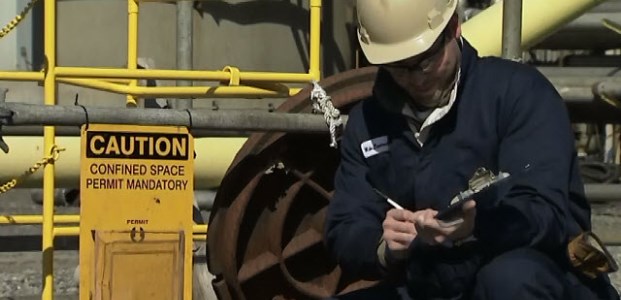
OSHA Issues Construction Confined Space Final Rule
It is similar in content and organization to the general industry confined spaces standard, with some provisions for construction-specific hazards -- including requirements to ensure that multiple employers share vital safety information and continuously monitor hazards.
OSHA on May 1 published its long-awaited final rule on construction confined spaces. The agency has been working on it for more than two decades and ultimately decided, based on stakeholders' comments, to make it more like OSHA's general industry confined spaces standard than originally planned. There are some provisions included in it for construction-specific hazards, including requirements to ensure that multiple employers share vital safety information and continuously monitor air contaminant and engulfment hazards -- something the agency says is possible because of technology developed in the years since the general industry standard took effect.
The rule will take effect in 90 days -- on Aug. 3, 2015. OSHA has set up a new website about it that will feature compliance resources.
Assistant Secretary Dr. David Michaels participated in a May 1 call with safety publications' editors to discuss the rule, which OSHA predicts will reduce the average number of annual injuries and fatalities in confined spaces covered by the rule by 96 percent. He said the fact that the rule is much different than the advance notice of proposed rulemaking OSHA issued eight years ago shows that "we listen to our stakeholders."
This rule establishes a new 29 CFR 1926 subpart that replaces OSHA's lone training requirement for construction confined space work, 29 CFR 1926.21(b)(6). OSHA states in the rule that it is a comprehensive standard that includes a permit program designed to protect employees from exposure to many hazards associated with work in confined spaces, including atmospheric and physical hazards.
OSHA said it recognizes that the differences between the general industry standard, 1910.146, and the final rule "can make it more complicated for employers to comply with two different sets of procedures if they perform maintenance and construction work at the same time in the same confined
space." So, in order to ease the compliance burden on these employers, OSHA will consider compliance with this final rule as compliance with 1910.146.
Based on stakeholder comments, this final rule is not drastically changing industry practice for addressing confined space hazards because many contractors have chosen to follow the general industry standard for many years. OSHA said in the rule that it believes state plan states have standards applicable to construction work in confined spaces that are similar to 1910.146, so they won't have to make major changes to their existing rules to ensure those rules are at least as effective as the final rule.
DOL's news release about the new rule cited a fatality case where one of the victims died while trying to rescue a co-worker. "In the construction industry, entering confined spaces is often necessary, but fatalities like these don't have to happen," Labor Secretary Thomas Perez said. "This new rule will significantly improve the safety of construction workers who enter confined spaces. In fact, we estimate that it will prevent about 780 serious injuries every year."
"This rule will save lives of construction workers," Michaels added."“Unlike most general industry worksites, construction sites are continually evolving, with the number and characteristics of confined spaces changing as work progresses. This rule emphasizes training, continuous work site evaluation ,and communication requirements to further protect workers' safety and health."